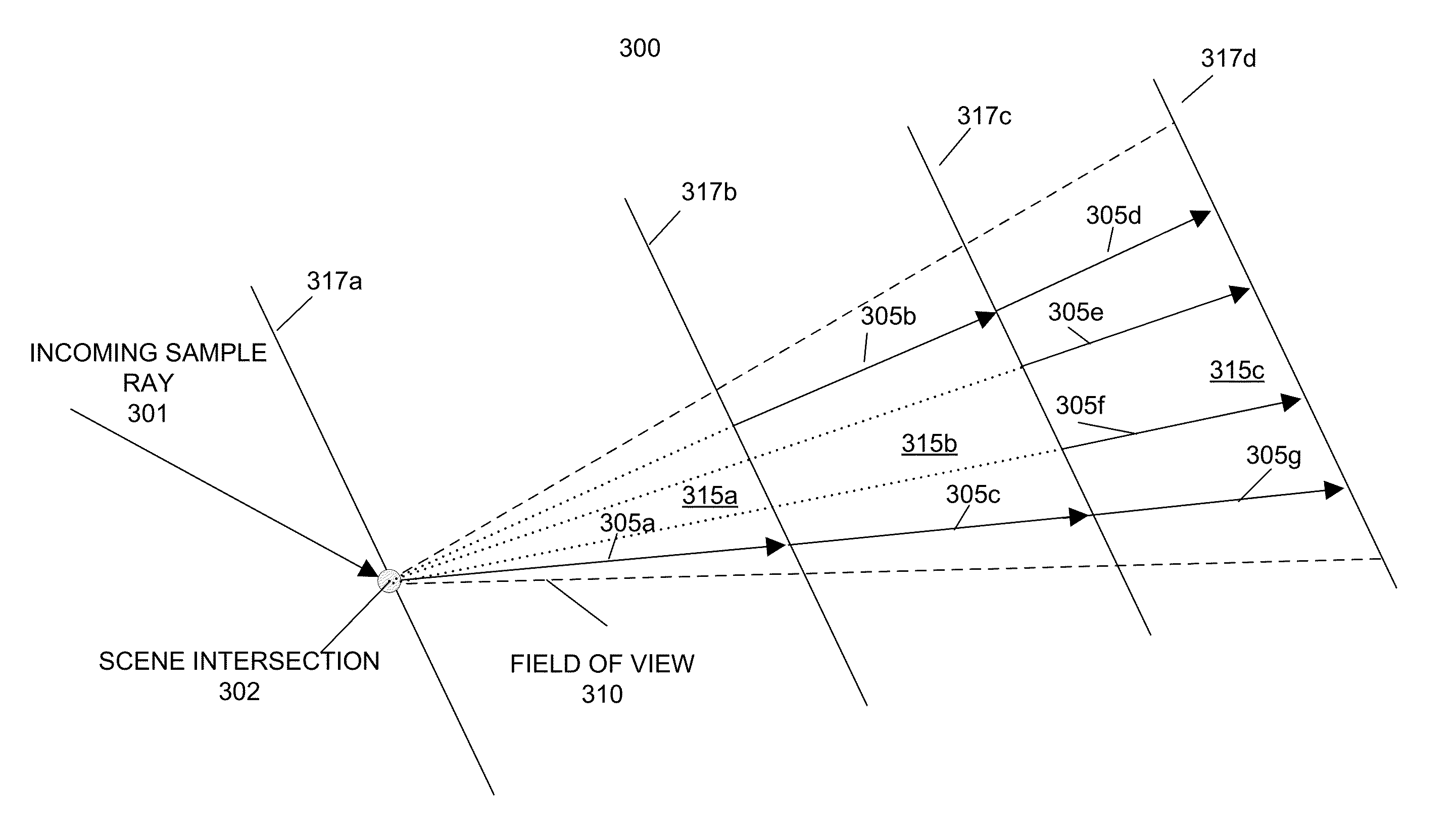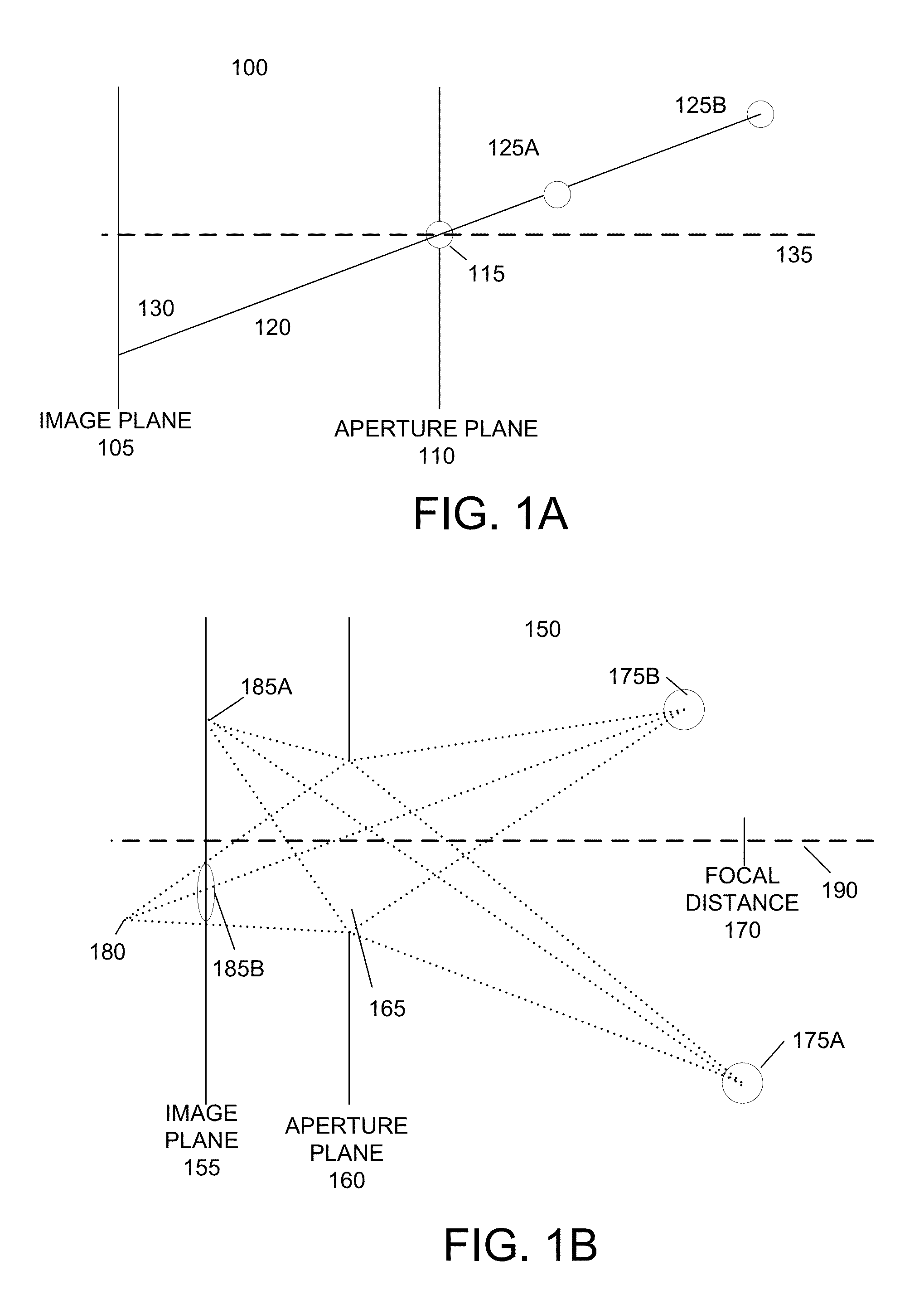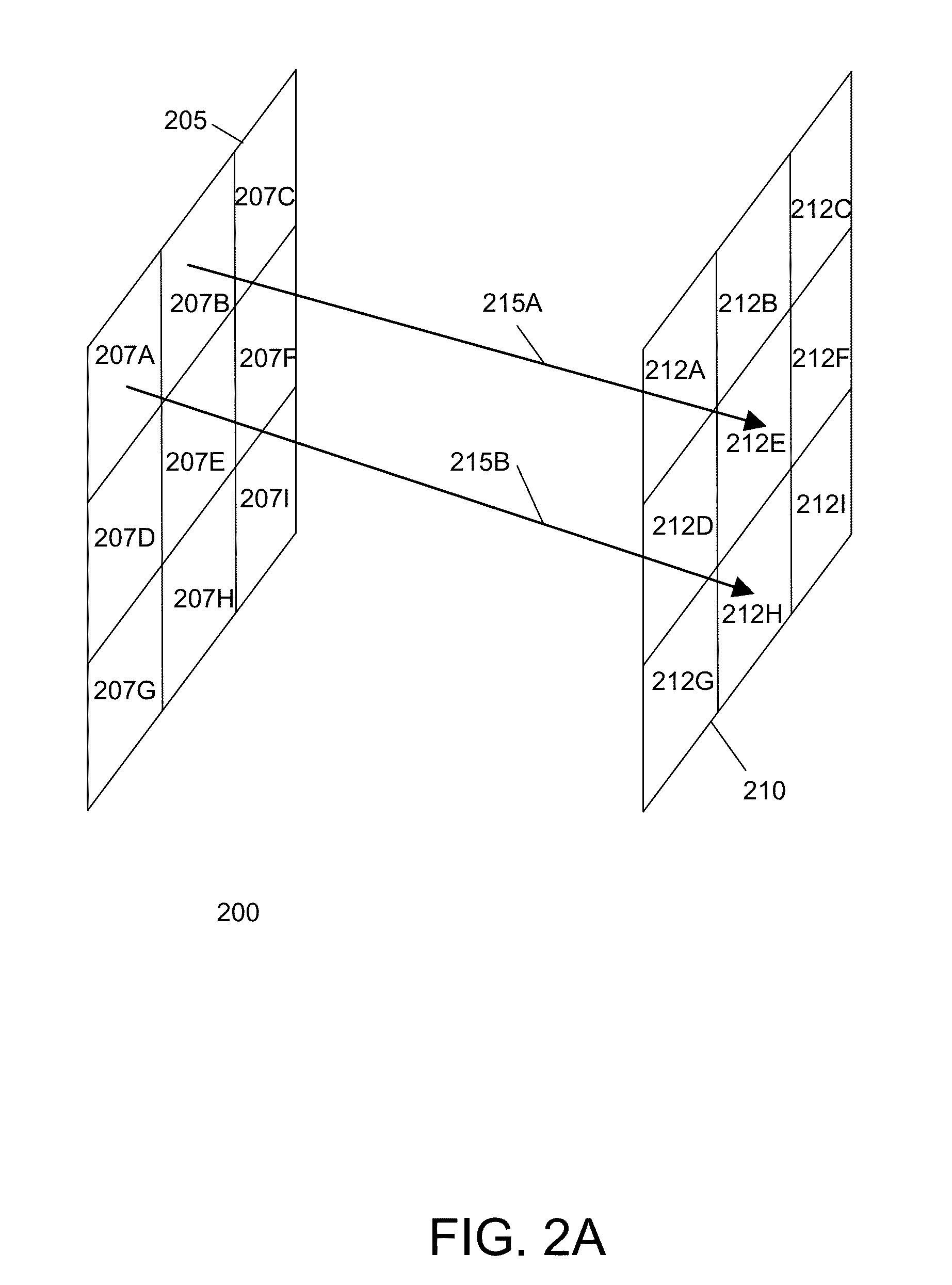Adaptive depth of field sampling
a depth sampling and depth of field technology, applied in the field of computer graphics, can solve the problems of increasing the amount of time and computing resources needed to render the image, and aliasing effects
- Summary
- Abstract
- Description
- Claims
- Application Information
AI Technical Summary
Benefits of technology
Problems solved by technology
Method used
Image
Examples
first embodiment
[0079]In a first embodiment, sample rays previously removed depth regions in front of the focal plane 577, such as sample rays 590a, 590b, and 590c, are restored to depth regions behind the focal plane 577. For example, depth region 585e includes an additional sample ray in the form of sample ray 590b′, which is a continuation of previously removed sample ray 590b. In this example, sample ray 590b may sample the scene 570 in depth regions 585a and 585b and sample ray 590b′ may sample the scene in depth regions 585e, 585f, 585g, and potentially any further depth regions.
second embodiment
[0080]In a second embodiment, new sample rays unrelated to the sample rays previously removed may be added to depth regions behind the focal plane 577. For example, depth region 585g includes sample rays 590d and 590b′ carried over from depth region 585f. Depth region 585g also includes additional sample ray 590e. Sample ray 590e is a new sample ray that has no counterpart in any of the previous depth regions 585.
[0081]As in the example of FIG. 5A, an embodiment of the invention may use back-tracing of sample rays to prevent occlusion errors. An embodiment of the invention back-traces any sample ray intersecting an object or other scene element to determine if this sample ray would have also intersected any objects or scene elements in previous depth regions where the sample ray was not used. If the sample ray does intersect an object or scene element in a previous depth region, then this sample ray's contribution to the image sample or subsample is set to zero.
[0082]For example, sa...
PUM
 Login to View More
Login to View More Abstract
Description
Claims
Application Information
 Login to View More
Login to View More - R&D
- Intellectual Property
- Life Sciences
- Materials
- Tech Scout
- Unparalleled Data Quality
- Higher Quality Content
- 60% Fewer Hallucinations
Browse by: Latest US Patents, China's latest patents, Technical Efficacy Thesaurus, Application Domain, Technology Topic, Popular Technical Reports.
© 2025 PatSnap. All rights reserved.Legal|Privacy policy|Modern Slavery Act Transparency Statement|Sitemap|About US| Contact US: help@patsnap.com



